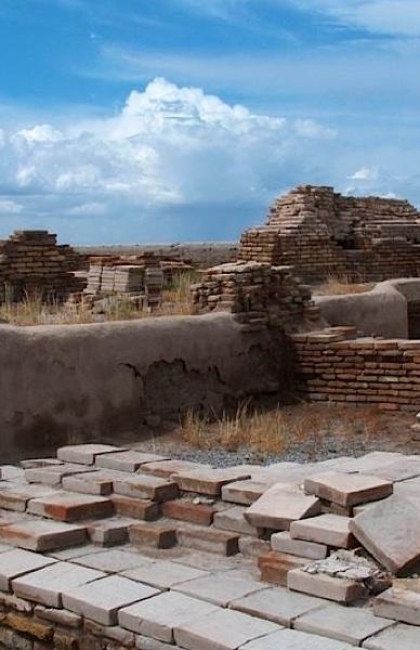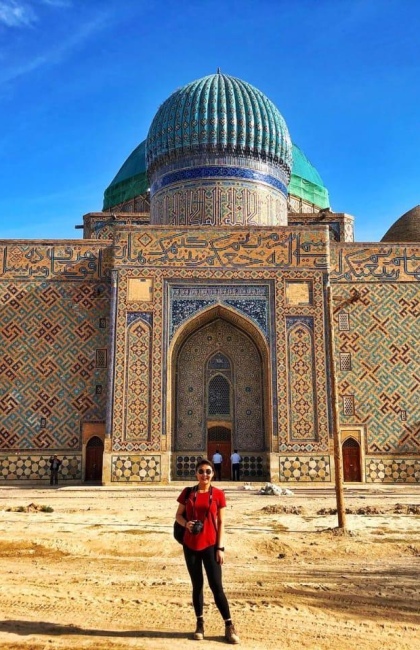Kazakhstan's Silk Road Legacy
The history of the Great Silk Road dates back to the 2nd century BC, when it started from the small city of Xi'an in China. This caravan road served as a crucial trade route that connected East Asia with the Mediterranean countries, facilitating the exchange of goods and ideas between various cultures. The term «Silk Road» was coined by the German geologist and traveler F. von Richthofen in the 19th century.
The route spanned a vast distance of around 6500 km (~4000 mi), and over the centuries, it underwent several changes in direction. It passed through many regions such as Yarkant, India, the Middle East, Turfan, Bactria, Parthia, past Lake Lop Nur, across the Taklamakan Desert, and through the Tien Shan Mountains.
Initially, the Silk Road was primarily used for the trade of silk for valuable commodities such as jade, jadeite, and Arabian horses. However, as the road network grew, the trade expanded to include other goods such as wine, fodder crops, sweet fruits, and spices. China also traded in rice, tea, porcelain, lacquerware, and metal utensils. The road witnessed the movement of camels loaded with bales of gold, silver, exotic fruits, glass, leather, and wool products in all directions. Additionally, valuable breeds of animals such as horses, sheep, dogs, and wild cats such as leopards and lions were traded on this route.
-large.jpeg)
The rise of maritime trade eventually led to the decline of the Great Silk Road. Transportation by water was cheaper, faster, and more convenient than land transport. The increasing popularity of shipping and maritime transit of goods in the 15th century ultimately led to the gradual disappearance of the Silk Road as a major route. Nevertheless, in some high-mountainous regions of Asia, the road continued to function until the 20th century.
Kazakhstan’s leg of the Silk Road
The Jetysu Region and the southern part of Kazakhstan played a significant role in the Great Silk Road. These steppe expanses witnessed the emergence of the first taxation and customs systems. Chinese merchants had to pay the local rulers with coins or goods to pass through this part of the route. The main cities in Kazakhstan on the Silk Road were Otrar, Sairam (Ispijab), Taraz, and Yassy (Turkistan). Caravans from these cities traveled to Central Asia, Persia, the Caucasus, and Europe. These cities owe their existence to the Silk Road. Initially, they were only stopping points for caravans, but gradually grew into busy trading cities.
Formerly powerful cities in Kazakhstan still showcase remnants of their former glory. Sairam (currently a suburb of Shymkent) has preserved its gates, mausoleums, and minarets. The city was first mentioned in written chronicles as early as the 7th century AD. The most notable landmarks that a tourist can visit are the Mausoleum of Ibrahim Ata, the Mausoleum of Karashash Ana, and the Mausoleum of Mirali Baba. Those are final resting places of prominent people. For instance, Karashash Ana and Ibrahim Ata are the parents of Khoja Ahmed Yassawi, an outstanding poet and Sufi.

Turkistan boasts the Mausoleum of Khoja Ahmed Yassawi, as well as other attractions like the Hilvet Underground Mosque and the Mausoleum of Rabiga Sultan Begim, making it a shrine city that draws pilgrims from all over the world. Near Turkistan there is the ancient city of Otrar. The birthplace of mathematician Al-Farabi, it was once destroyed by the army of Genghis Khan but was rebuilt until it ceased to exist in the 19th century, now a site for archaeological excavations. Another ancient settlement near Turkistan is Sauran. The city was poorly preserved. However, it provided many fascinating archaeological finds and now boasts recreated main gates, fortress walls and some buildings.
Taraz, founded over 2000 years ago, played a major role in the Great Silk Road. It is home to the mausoleum of Karakhan, Aisha Bibi, and Babaji Khatun. All these buildings date back to the 11-12th centuries AD.
Join us on our guided tours along the Great Silk Road in Kazakhstan. Explore historical caravanserais, trading hubs, and ancient architecture while immersing yourself in local traditions and cuisine.

_420x650_4ab.jpg)

